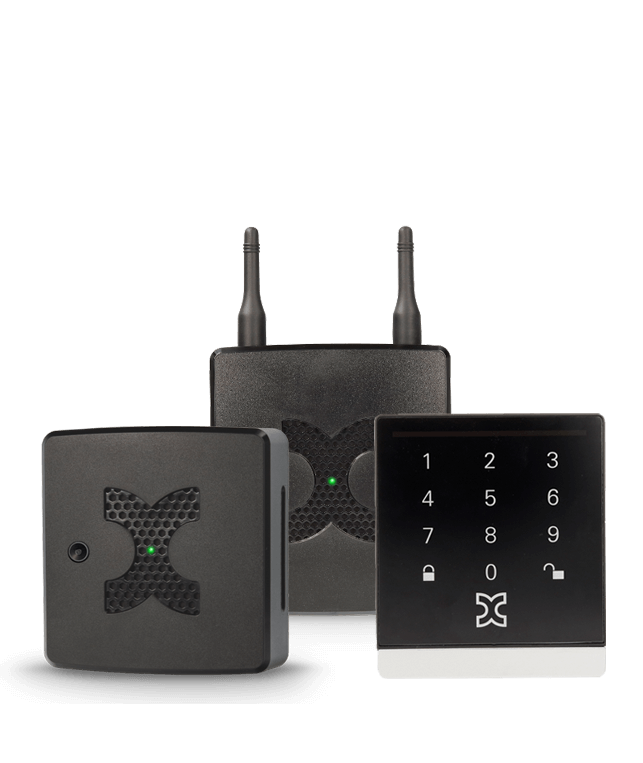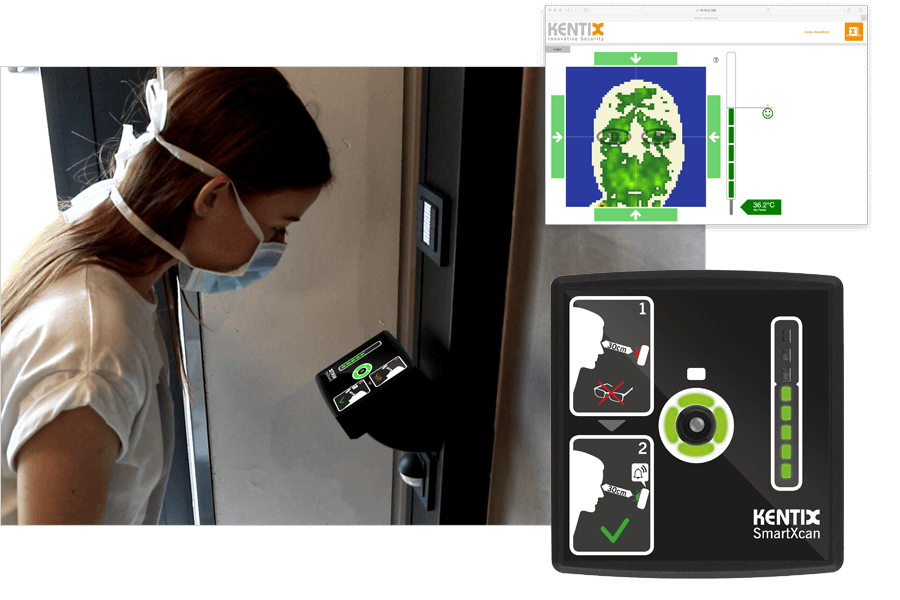IoT & Environmental Sensors

Are you worried about what you cannot see?
Secure your mission-critical infrastructures with Environmental Monitoring & Access Control
- The environment you work in isn’t always covered by cameras. Some threats can’t be seen with the human eye until it’s too late. Multi-sensor Thermal Imaging & Smart Monitoring can tell you how many people are in the room, equipment that is reaching critical temperature, water flooding, particles in the air before there’s smoke, including when someone is not moving and laying on the floor. You can control access to doors, areas and have the added thermal visibility of environmental conditions.
- Turning any building into a Smart Building is easy when using the Kentix MultiSensor family. The MultiSensors provide an all-in-one solution, integrating environmental monitoring, access control, video and power. They are 100% IoT based, open, scalable, and simple. Protect your assets and critical infrastructure against 37 physical threats while meeting the ISO 27001 requirements.

Protect Your Assets and Critical Infrastructure against 20 Physical Threats
Here are a few:

Prevent the Spread of Diseases - Elevated Body Temperature Scanning and People Counting as Easy as 1-2-3
Did you know that the international standard IEC 80601-2-59 regulates the essential performance characteristics for screening people for fever?
Over 80% of fever measurements are not accurate enough due to too many process variables and hardly provide usable measured values.
The SmartXcan fever scanner offers a reliable thermal sensor solution suitable for accurate measurement of body temperature.
Identification of Infected Persons is Crucial
But equally important is limiting the number of people in a room! Passthrough Counting and Presence Counting is easily done with the Kentix TI.
.gif)
The Benefits of Using Environmental Sensors for Building Security
The modern world demands more advanced security measures beyond traditional methods. Incorporating an environment monitoring system is essential. These systems, like the Kentix MultiSensor, not only provide surveillance but actively monitor physical and environmental threats, ensuring a 360-degree protection approach.
Accurate Body Temperature Measurement with MultiSensor Thermal Imaging
In times of health crises, early detection can be a game-changer. MultiSensor Thermal Imaging systems, such as the SmartXcan fever scanner, go beyond traditional temperature checks. They are designed to provide highly accurate body temperature readings, ensuring the safety of individuals and the broader community.
Safety and Efficiency Through Access Control and Presence Counting
Ensuring safety isn't just about monitoring threats but also about managing people and access. Tools like pass-through and presence counting, coupled with access control systems, allow for effective crowd management, ensuring spaces do not become overcrowded and adhere to safety standards.
Meeting Industry Standards: Ensuring Compliance with Kentix MultiSensors and ISO 27001
Adhering to industry standards is not just about compliance but about ensuring the highest levels of safety and security. Systems like Kentix MultiSensors help businesses meet ISO 27001 requirements, ensuring that they are not only protected but also adhere to internationally recognized standards.
Frequently Asked Questions
How can environmental sensors protect my business against physical threats?
An environment monitoring system, such as the Kentix MultiSensor family, provides an all-in-one solution to monitor and alert against various physical threats. This includes tracking temperature, humidity, fire, motion, voltage levels, carbon monoxide, and carbon dioxide. By staying vigilant about these factors, businesses can proactively take measures to protect their assets and critical infrastructure.
Can thermal imaging sensors accurately measure body temperature?
Yes, the SmartXcan fever scanner, for instance, utilizes reliable thermal sensor solutions designed to measure body temperature accurately. This is crucial as over 80% of traditional fever measurements may not provide accurate results.
How does the Kentix MultiSensor family integrate with other security systems?
The Kentix MultiSensor family is 100% IoT-based, open, scalable, and straightforward. This means it can seamlessly integrate with various security systems, offering environmental monitoring, access control, video, and power management in one unified platform.
Are there any legal or privacy concerns with using fever scanners for disease control?
While the technology aids in identifying potentially infected individuals, businesses must ensure that they adhere to privacy regulations and inform individuals of temperature checks. It's essential to consult local regulations and obtain necessary permissions where needed.
Can the SmartXcan fever scanner accurately distinguish between a person with a fever and someone who is just warm from being outside?
The SmartXcan fever scanner is designed for accurate body temperature measurement. While external factors can affect readings, the scanner's technology aims to provide a reliable body temperature measurement, reducing inaccuracies from external variables.
Will presence or pass-through counting be affected by people wearing masks or personal protective equipment?
The Kentix TI system's counting feature primarily focuses on detecting human presence rather than facial features. As such, the presence of masks or personal protective equipment should not affect its accuracy.
How often should environmental sensors be calibrated or checked for accuracy?
Regular calibration ensures that environmental monitoring equipment operates accurately. The frequency depends on the specific device and the conditions it operates under. Consulting the manufacturer's guidelines or an environment monitoring service expert is recommended.


